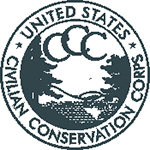History of Cowans Gap State Park
The history of Cowans Gap State Park is of war, forbidden love, and hard work.
Famous Road
The French and Indian War began in 1754 as the French and British fought for the Ohio River Valley, which included western Pennsylvania. Key to the control of the area was the Forks of the Ohio (Pittsburgh), which was held by the French. In 1755, British Major General Edward Braddock carved a new road from Cumberland, Maryland, toward the Forks.
To carry additional supplies to Braddock’s army, Colonel James Burd began a road from Shippensburg that was planned to reach Braddock’s forces at Turkey Foot (Confluence, Pa.). Burd’s Road climbed Tuscarora Mountain by passing through a gap eventually named Cowans Gap.
Braddock’s army was defeated and Burd’s Road was never completed past Berlin, Somerset County.
In 1758, the British again sent a campaign toward the Forks of the Ohio. General John Forbes, along with his aide, Colonel George Washington and second in command, Lieutenant Colonel Henry Bouquet, carved a new road (Forbes Road). If followed Burd’s Road through Bedford County then headed due west to the Forks of the Ohio.
General Forbes drove the French out of Pennsylvania. In 1763, Colonel Henry Bouquet again used Forbes Road to break the siege of Fort Pitt during Pontiac’s War.
Names
In 1775, Loyalist John Samuel Cowan met Patriot Mary Mueller in Boston. Although from opposite political parties, the couple eloped several years later and headed for Kentucky.
The family story relates that while crossing the Conococheague Creek near Fort Loudon, their wagon broke down. John traded their horses and wagon to a Tuscarora Indian Chief for the land now known as Cowans Gap.
John secured peace pipe and tomahawk rights from the Tuscaroras, marking a big chestnut tree with three slashes, a sign of peace.
In 1785, John secured a warrant for the land from the Proprietors of Pennsylvania.
John and Mary built their house along Forbes Road, near what is now the junction of Stumpy Lane and Aughwick Road.
Most of Cowans Gap State Park is in Allens Valley, named for neighbors of the Cowans.
Industrial Times
Nearby, Mount Pleasant Iron Furnace operated from 1783 to 1835. Richmond iron furnace operated from 1865 to 1885.
Both furnaces mined iron ore along the face of Tuscauroa Mountain and in the gap. The furnaces’ demand for charcoal led to the clear-cutting of portions of the forests in the gap and the valley every 20 to 25 years.
Beginning in 1893, Harrison Kalbach of Lebanon, Pennsylvania, began purchasing land and timbering rights amounting to 4,800 acres around Cowans Gap.
Kalbach and Company constructed a railroad of wooden rails from Richmond Furnace up the mountain and into the gap to move the lumber to market. Today’s Richmond Furnace Road follows the old railroad right-of-way.
Kalbach and his partner, Charles Spangler of McConnellsburg, operated a portable sawmill in the valley, cutting mainly pine and oak. The final cut was completed in 1907, leaving a landscape of over-cut forests and erosion.
Recovery

In 1933, to relieve the rampant unemployment of the Great Depression, President Roosevelt created the Civilian Conservation Corps (CCC). The young men in the CCC received food, clothes, and a small paycheck.
The CCC boys built roads, trails, and recreational facilities; fought fires; planted trees; and did many other conservation activities.
Richmond Furnace Camp S-54 was built next to the new forestry station at Cowans Gap. The camp was locally called Camp Fox for an enrollee killed in an accident while stationed at the camp.
The first enrollees to the camp lived in tents while they built housing for themselves. From 1933 to 1941, the CCC built:
In Cowans Gap State Park, the CCC built the cabins, picnic shelters, and spent three years building the dam. The Cowans Gap Rustic Cabins are on the National Register of Historic Places.
Improvements continue at Cowans Gap, with additions like the campground and modern restrooms. In 2002, Cowans Gap State Park closed to visitors for a year-long renovation to upgrade many facilities.